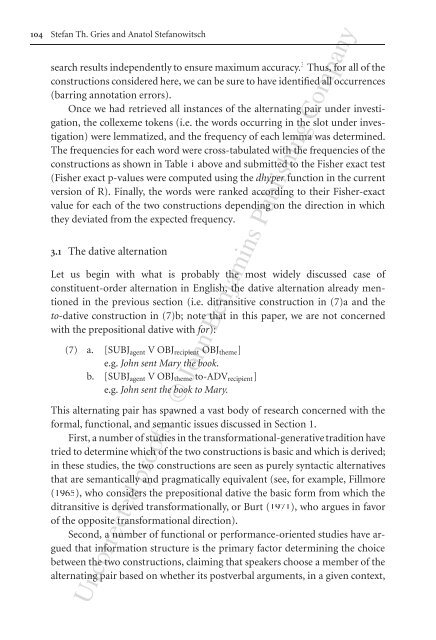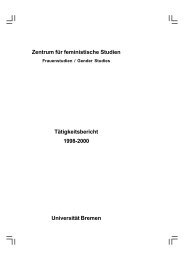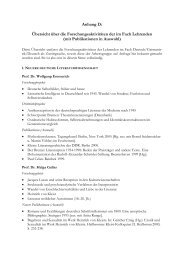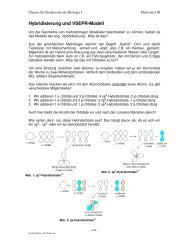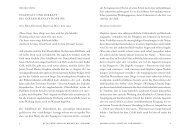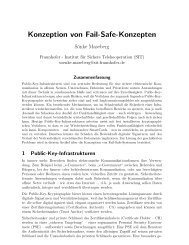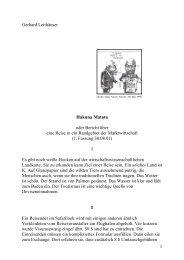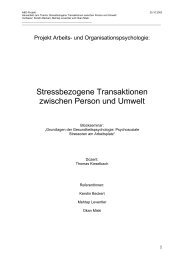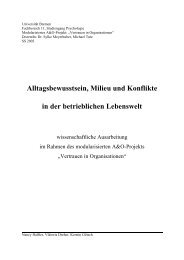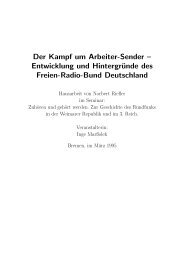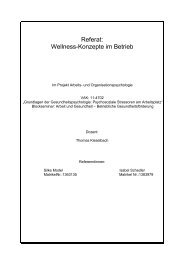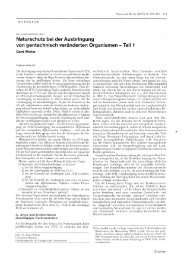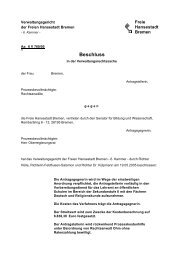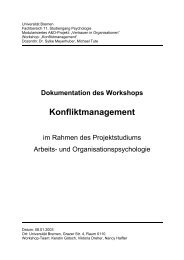Extending collostructional analysis - www-user
Extending collostructional analysis - www-user
Extending collostructional analysis - www-user
You also want an ePaper? Increase the reach of your titles
YUMPU automatically turns print PDFs into web optimized ePapers that Google loves.
104 Stefan Th. Gries and Anatol Stefanowitsch<br />
search results independently to ensure maximum accuracy. 3 Thus, for all of the<br />
constructions considered here, we can be sure to have identified all occurrences<br />
(barring annotation errors).<br />
Once we had retrieved all instances of the alternating pair under investigation,<br />
the collexeme tokens (i.e. the words occurring in the slot under investigation)<br />
were lemmatized, and the frequency of each lemma was determined.<br />
The frequencies for each word were cross-tabulated with the frequencies of the<br />
constructions as shown in Table 1 above and submitted to the Fisher exact test<br />
(Fisher exact p-values were computed using the dhyper function in the current<br />
version of R). Finally, the words were ranked according to their Fisher-exact<br />
value for each of the two constructions depending on the direction in which<br />
they deviated from the expected frequency.<br />
3.1 The dative alternation<br />
Let us begin with what is probably the most widely discussed case of<br />
constituent-order alternation in English, the dative alternation already mentioned<br />
in the previous section (i.e. ditransitive construction in (7)a and the<br />
to-dative construction in (7)b; note that in this paper, we are not concerned<br />
with the prepositional dative with for):<br />
(7) a. [SUBJagent VOBJrecipient OBJtheme]<br />
e.g. John sent Mary the book.<br />
b. [SUBJagent VOBJtheme to-ADVrecipient]<br />
e.g. John sent the book to Mary.<br />
This alternating pair has spawned a vast body of research concerned with the<br />
formal, functional, and semantic issues discussed in Section 1.<br />
First, a number of studies in the transformational-generative tradition have<br />
tried to determine which of the two constructions is basic and which is derived;<br />
in these studies, the two constructions are seen as purely syntactic alternatives<br />
that are semantically and pragmatically equivalent (see, for example, Fillmore<br />
(1965), who considers the prepositional dative the basic form from which the<br />
ditransitive is derived transformationally, or Burt (1971), who argues in favor<br />
of the opposite transformational direction).<br />
Second, a number of functional or performance-oriented studies have argued<br />
that information structure is the primary factor determining the choice<br />
between the two constructions, claiming that speakers choose a member of the<br />
alternating pair based on whether its postverbal arguments, in a given context,<br />
Uncorrected proofs - © John Benjamins Publishing Company


